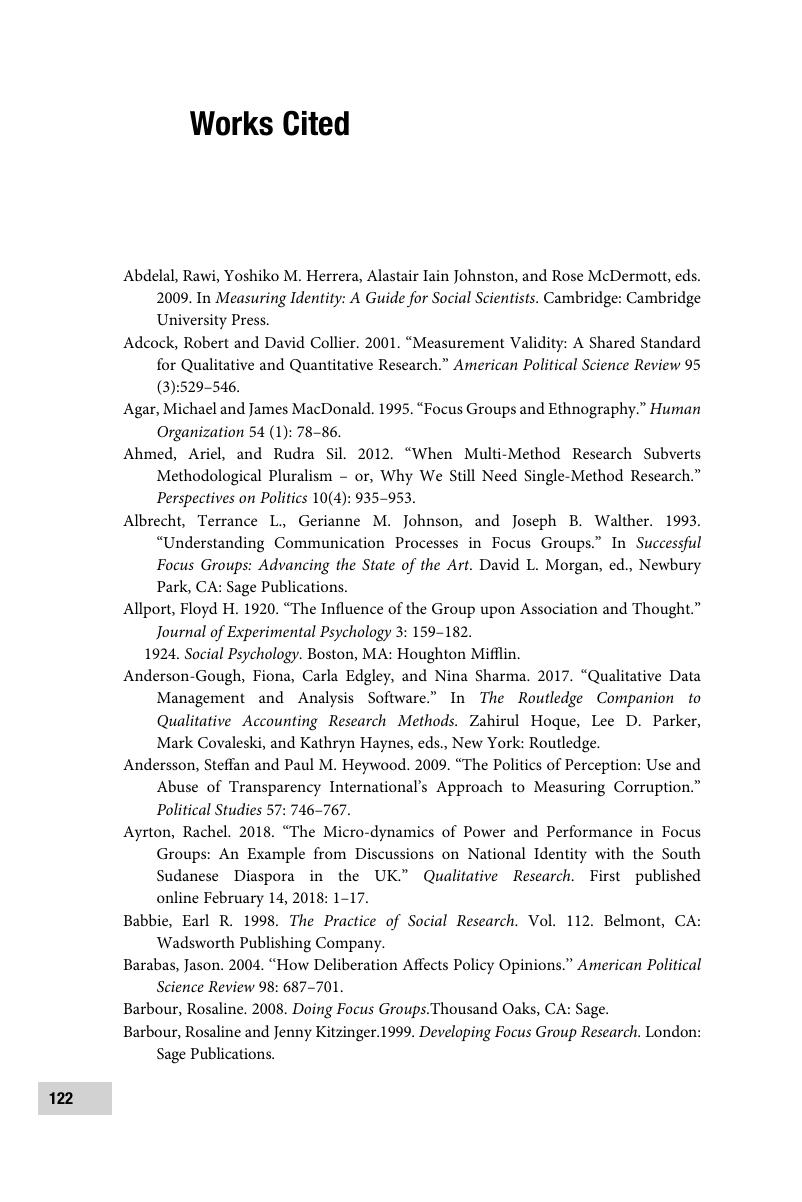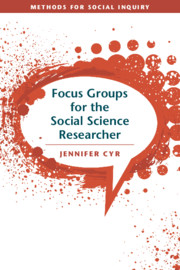Book contents
- Focus Groups for the Social Science Researcher
- Methods for Social Inquiry
- Focus Groups for the Social Science Researcher
- Copyright page
- Contents
- Tables
- Boxes
- Acknowledgements
- 1 Introduction
- 2 When to Use Focus Groups
- 3 Preparing for the Focus Groups
- 4 Undertaking Focus Groups
- 5 Analyzing Focus Groups and Presenting the Results
- 6 Conclusion
- Appendix 1 Sample Question Protocol, with Instructions for the Moderator (instructions are italicized)
- Appendix 2 Additional Analytical Tools Available to the Focus Group Researcher
- Works Cited
- Index
- References
Works Cited
Published online by Cambridge University Press: 27 March 2019
- Focus Groups for the Social Science Researcher
- Methods for Social Inquiry
- Focus Groups for the Social Science Researcher
- Copyright page
- Contents
- Tables
- Boxes
- Acknowledgements
- 1 Introduction
- 2 When to Use Focus Groups
- 3 Preparing for the Focus Groups
- 4 Undertaking Focus Groups
- 5 Analyzing Focus Groups and Presenting the Results
- 6 Conclusion
- Appendix 1 Sample Question Protocol, with Instructions for the Moderator (instructions are italicized)
- Appendix 2 Additional Analytical Tools Available to the Focus Group Researcher
- Works Cited
- Index
- References
Summary

- Type
- Chapter
- Information
- Focus Groups for the Social Science Researcher , pp. 122 - 130Publisher: Cambridge University PressPrint publication year: 2019



